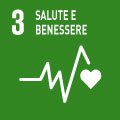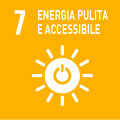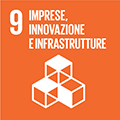- Docente: Walter Cabri
- Crediti formativi: 6
- SSD: CHIM/06
- Lingua di insegnamento: Inglese
- Moduli: Walter Cabri (Modulo 1) Maria De Lurdes Dos Santos Cristiano (Modulo 2) Maria Del Pilar Ramirez De La Piscina Millan (Modulo 3)
- Modalità didattica: Convenzionale - Lezioni in presenza (Modulo 1) Convenzionale - Lezioni in presenza (Modulo 2) Convenzionale - Lezioni in presenza (Modulo 3)
- Campus: Bologna
-
Corso:
Laurea Magistrale in
Chemical Innovation and Regulation (cod. 5701)
Valido anche per Laurea Magistrale in Chemical Innovation and Regulation (cod. 5701)
-
Orario delle lezioni (Modulo 1)
dal 07/01/2025 al 10/01/2025
-
Orario delle lezioni (Modulo 2)
dal 19/05/2025 al 22/05/2025
Conoscenze e abilità da conseguire
At the end of the course the student will know the principles and tool of Green Chemistry and how to assess the greenness of a chemical process exploiting Green metrics. The student will become able to apply the knowledge achieves to the problems of chemical industry. A spectial attention will be devoted to the emerging field of Nanotechnology, also in the light of regulatory constraints.
Contenuti
INDUSTRIAL INNOVATION
The UC consists of three modules, with the following contents:
(1) Pharmaceutical and fine chemicals industry
The target of the module is to give the possibility to study the best in class technologies available in drug research and development. Intellectual property impact in the pharmaceutical industry will be discussed as well as the change in the quality system determined by the International Regulations. Pharmaceutical Green Chemistry; Drug Substance development and pharmaceutical green chemistry; Drug product challenges and total quality; Analytical development and most recent ICH guidelines
(2) Industrial forgery detection
Introduction to the problems related with industrial forgery of chemicals, namely that related with health security, industrial and intellectual property. Some of the more relevant analytical technics used on detection of industrial forgery will be presented, with special emphasis on the use of the analytical results in forensic context.
(3) Environmental Catalysis
Catalysis for a sustainable synthetic chemistry: a) selectivity (chemo-, regio- e stereo-) and allowing mild and sustainable operating conditions to be reached. b) Replacement of hazardous chemicals with environmentally safe organic compounds. c) The basic concepts of Brønsted as well as Lewis base and acid catalysis, applied to organic synthesis. d) Metal-catalyzed reaction such as Cross-coupling reaction and metathesis of π-systems
SUSTAINABLE PHARMA INDUSTRY
The UC consists of three modules, with the following contents:
(1) Pharmaceutical and fine chemicals industry
The target of the module is to give the possibility tostudy the best in class technologies available in drug research and development. Intellectual property impact in the pharmaceutical industry will be discussed as well as the change in the quality system determined by the International Regulations.Pharmaceutical Green Chemistry; Drug Substance development and pharmaceutical green chemistry; Drug product challenges and total quality; Analytical development and most recent ICH guidelines
(2) Industrial forgery detection
Introduction to the problems related with industrial forgery of chemicals, namely that related with health security, industrial and intellectual property. Some of the more relevant analytical technics used on detection of industrial forgery will be presented, with special emphasis on the use of the analytical results in forensic context.
(3) Patenting new products
In this module the basic information on the most important aspects of intellectual property rights when dealing with organic molecular crystals (pharmaceuticals, pigments, agrochemicals, food materials). Examples of patents based on crystalline materials properties and identification of the most accessible analytical tools (diffraction and thermodynamic techniques, TGA, DSC) and spectroscopic techniques, with applications to solid state principles.
Testi/Bibliografia
Lecture notes will be available for students.
- “Innovative Catalysis in Organic Synthesis, Oxidation, Hydrogenation, and C-X Bond Forming Reactions”, Andersson, Pher G. (ed.), Wiley-VCH, 2012.
- “Fundamentals of Asymmetric Catalysis”, P. Walsh and M. Kowzlowski (eds.), University Science Books 2009
- Walter Cabri & Romano di Fabio “From Bench to Market. The Evolution of Chemical Synthesis from Discovery to Industrial Production.”; Oxford University Press: Oxford, 2000.
- Walter Cabri “Industrial Synthesis Design With Low Environmental Impact In The Pharma Industry” in New Methodologies and Techniques for a Sustainable Organic Chemistry; Mordini,A. Ed.; Springer-Verlag WB/Nato Publishing Unit.; pp119.
- ICH Guidelines: http://www.ich.org/products/guidelines.html
Metodi didattici
The course unit is divided in three modules. Each module is organized in theoretical classes where main concepts are explained, as well as tutorial classes with discussion of case-study examples.
Modalità di verifica e valutazione dell'apprendimento
Each module is assessed through a written assignment, including a report on literature research.
Orario di ricevimento
Consulta il sito web di Walter Cabri
Consulta il sito web di Maria De Lurdes Dos Santos Cristiano
Consulta il sito web di Maria Del Pilar Ramirez De La Piscina Millan
SDGs




L'insegnamento contribuisce al perseguimento degli Obiettivi di Sviluppo Sostenibile dell'Agenda 2030 dell'ONU.
